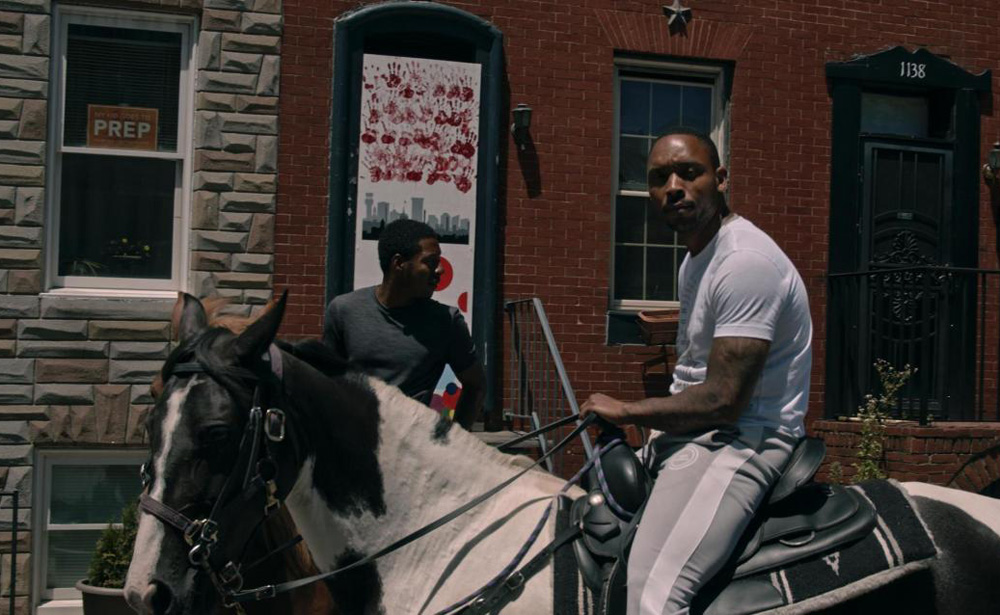“You only really have one shot to tell the story,” Ivan Bates can be heard saying early in “I Got a Monster,” preparing to appear before a commission tasked with cleaning up corruption within the Baltimore Police Department. The Commission to Restore Justice in Policing is convened after the Gun Trace Task Force, led by Sgt. Wayne Jenkins, disgraced the badge with an outrageous scheme, seizing drugs and reselling them as well as taking any money found during raids, whether there was any criminal activity discovered at the home or not. Bates, a defense attorney at the time — he was elected to serve as the city’s State’s Attorney earlier this year — had heard the story of the GTTF exploits time and again as he took on one client after another who was a victim of their set-ups, at best leading to arrests that were unlawfully obtained and at worst tying up innocent citizens in years of court cases trying to clear their name when Jenkins and crew preyed upon the Black community, knowing the system was already stacked against them.
There are audiences that may also think they’ve seen this story before when it was adapted for the HBO miniseries “We Own the City,” in which Jon Bernthal starred as Jenkins, an irresistible star attraction when he moonlighted as an MMA fighter and would use a charm offensive in addition to threatening jail time to those he swindled. However, director Kevin Abrams, working with journalists Baynard Woods and Brandon Soderberg, who penned a book version of “I Got a Monster,” refuse to make him or any of the corrupt cops the stars of their film, instead revealing how they were allowed to operate for so long even after their criminal conduct had been reported when weaknesses in how law was applied were exploited at every turn, from shadowy departmental procedures that stifled investigations through the slow schedule of courts that kept those accused in limbo. Indifference becomes as much a villain as the cops lining their own pockets when any accusation against them seems to fall on deaf ears, though it is countered by Bates’ persistence in connecting a pattern of the Task Force’s behavior through his clients as well as Abrams, Woods and Soderberg’s own dogged efforts to bring their stories to light.
Just as Abrams took a different angle than most in exploring the fallout from the scandal, “I Got a Monster” has made its way into the world in an unorthodox way, made available on VOD in March before hitting theaters this week and the director spoke about how he took the many curveballs thrown by the project in stride and responded with a film that has a fresh perspective, working in tandem with Woods and Soderberg as they were putting together their book, and what it really takes to get such details for an investigative doc such as this.
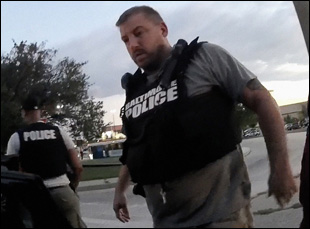
Baynard [the co-author of “I Got a Monster”] and I worked on a project years ago [based on] a book he wrote way back in the day about this unbelievable true life story that took place in the 1920s about a sheriff patrolling an island in North Carolina and not using a gun, he was using voodoo at the time. We developed it as a TV series and through that we became really good friends and when he and his writing partner, Brandon Soderberg, decided they wanted to put a book together [for “I Got a Monster” based on their reporting], they reached out to us about trying to do a documentary as well.
We hatched an idea to bring both to market at the same time, and our agents helped them with placing their book and we produced and went on and made the movie, so it was really a cool experience because the reporting on both sides was able to influence each other and help people resource a lot more than we would individually. They have a wonderful reputation locally [in Baltimore] as writers, and doing right by their subjects on the subject matter and have been tracking these cases for a while, specifically Wayne Jenkins and what he was doing, so when they were beginning to write on it, they accumulated a lot of really goodwill and when they told us about people locally that were making the documentary, people were inclined to trust us because of it and it facilitated a lot of wonderful interviews that we wouldn’t have if we had to start from scratch.
When this film deals with the lack of transparency there was as far as these internal affairs investigations go, did you actually benefit from any of the reforms that might’ve been put in place after these cases?
It was a tricky situation. We were benefiting in some ways and we were also the victim of new laws and attention to transparency that happened right before we started investigating. If you’re familiar with the podcast Serial, they investigated the Adnan Syed case and the reporter went in and would record some of the audio from the trials onto her phone. That was her way of getting access to information that wasn’t quite available to her, but she was able to do it in the gray areas and by the time we started asking for that type of [ability to record], Baltimore was very aware of people using it to probably do a disservice to some of the stuff that happened with them legally, so they were very keen on not giving us the ability to get that. Locally, Brandon Soderberg was able to eventually bring suit against them to get it eventually released with a bunch of lawyers and now we have the access to it and we can legally share it and use it. But there was definitely a dance throughout that and eventually, [that process] helped illuminate what was going on in the story because you could actually see the lawyer, Ivan Bates, our main protagonist, struggle with the reality of what he was dealing with.
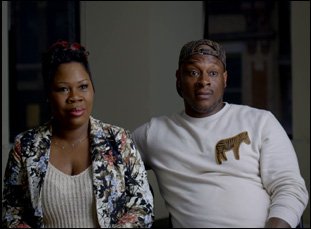
He wasn’t, and that was really one of the ways that we benefited from what Bay and Brandon’s were doing with the book. They were able to move at a much faster clip than we were, because writing obviously doesn’t have as many steps to finishing the product as filmmaking does, so as they were going through the process of structuring their book, they really realized that he was a great fundamental throughline by which to stitch all the stories together. Initially we always saw this documentary as a multi-part series that really got into the systemic corruption within the city and how it was deeply felt through multiple decades and how the city was dealing with it currently. Unfortunately in the 11th hour, [that concept] fell apart, but we had all this footage and we were trying to figure out how to convert it into a [feature]. It was [Bay and Brandon’s] idea to really focus it on Ivan and that really helped us just pull all the parts together also give it the emotional elements of what you want in a film.
We also knew that there was just a lot more to discover if we took the POV of the victims because they were the people that were really never given a microphone throughout this whole process, even though they were screaming the loudest. When we got involved, it was when the unit was on trial [for corruption], so we were there for some of their convictions, but a lot of what happened was already to some extent finished and since Ivan actually defended a lot of [the victims], we were able to combine both those POVs into being what became the backbone of how we told the story as opposed to through the cops and the [more] sensational elements.
Initially, when we saw this, we were just thinking “Serpico.” [like] a great, gritty ’70s Sidney Lumet-style [thriller about] corruption — all these movies that I grew up loving and being really inspired by. But as we got into it, we realized that, that was the obvious [story], but when we really heard about what was happening to the people and how they were still years after this happened, dealing with the repercussions of getting arrested, the false arrest, the planting of drugs on them, and what it meant for them financially, socially, emotionally, and spiritually, that really was the story that we wanted to tell.
You do get to talk to Donny Stepp, who became a fence for the cops — how did you end up seeking him out?
Who wouldn’t want to seek out Donny Stepp? [laughs] He’s such a amazing character and such an integral part of this. That was also a long song and dance. We talked to him for months before he sat down and agreed to interview with us. He was speaking to a lot of other people about possibly sitting down — there was a separate HBO project going on at the time that was a documentary that was trying to sit down with him too, and I think it really came down to the good will that Bay and Brandon were able to already create with him. They were in talks with him for a while. He trusted them and he gave us the greatest gift, which was to sit down with him for four hours the day before he had to turn himself in for self-arrest for the conviction and the crimes and the sentencing for what he did.
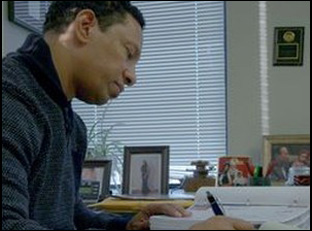
It was interesting. The fiction version that David Simon ended up producing, which I think does a great job of telling part of the story, [was] developed and produced all while we were still in edit. Just to give an idea of how long this [took on our end], we interviewed former governors, former mayors, former people that were involved in all different parts of the higher ups within the Baltimore Police Department and ended up with hundreds and hundreds of hours of footage, so there was a bigger tapestry that we’re wanting to bring together. When we finished the first cut of the film, it was close to three hours and when we were submitting it to festivals, we were still over two hours and in my opinion, it never truly found its creative footing. Then COVID happened, so I had the ability to really sit with the footage and pare down the story to what it is now, which is roughly, 92 minutes that doesn’t get overly bogged down in minutiae that the movie doesn’t support and really focuses on the victims and Ivan helping them get their story out there.
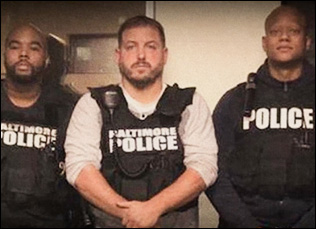
Without a doubt, and one of the people that appears briefly in the film, PFK Boom, is a local activist and an incredible local citizen fighting for change within his community who was falsely imprisoned for a crime that he didn’t commit. He was jailed for a long time and [now that he’s] come out, he’s trying to help create peace and order and opportunity for people that he grew up with in that type of environment and we were interviewing him once and something came up [where] he said, “Listen, your job right now is to listen and learn. We don’t need for you to do anything else.”
After he said that, it very much set the framework by which all the filmmakers — our producers, our cinematographers, our sound people — really realized that that was our job. We were, to a extent, interlopers. We came in from Los Angeles, and they could probably imagine the worst about Hollywood and they allowed us to document their story and our only job was to try to be as honest and respectful of that [as possible], so I am really thankful that at the end, they think we did justice and respected them because that was what kept us pushing throughout all of the edit and this whole time of finishing the film — giving them that back for the gift they gave us of being able to witness it.
“I Got a Monster” is now available to rent on Prime Video and Apple TV. It opens on July 14th at the Monica Film Center in Los Angeles.




